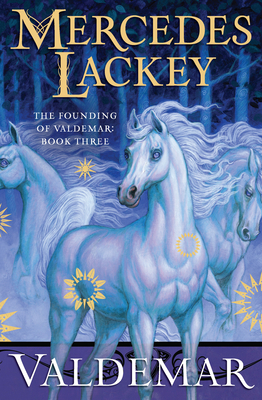 Valdemar (The Founding of Valdemar #3) by Mercedes Lackey
Valdemar (The Founding of Valdemar #3) by Mercedes Lackey Format: eARC
Source: supplied by publisher via NetGalley
Formats available: hardcover, ebook
Genres: epic fantasy, fantasy
Series: The Founding of Valdemar #3, Valdemar (Publication order) #58, Valdemar (Chronological) #6
Pages: 368
Published by DAW on December 26, 2023
Purchasing Info: Author's Website, Publisher's Website, Amazon, Barnes & Noble, Kobo, Bookshop.org, Better World Books
Goodreads
The long-awaited story of the founding of Valdemar comes to life in this 3rd book of a trilogy from a New York Times bestselling author and beloved fantasist.
The refugees from the Empire have established a thriving city called Haven with the help of the Tayledras and their allies. But the Tayledras have begun a slow withdrawal to the dangerous lands known as the Pelagirs, leaving the humans of Haven to find their own way.
But even with Haven settled, the lands around Haven are not without danger. Most of the danger comes in the form of magicians: magicians taking advantage of the abundant magical energy in the lands the Tayledras have cleansed; magicians who have no compunction about allying themselves with dark powers and enslaving magical beasts and the Elementals themselves.
Kordas, his family, and his people will need all the help they can get. But when a prayer to every god he has ever heard of brings Kordas a very specific and unexpected form of help, the new kingdom of Valdemar is set on a path like nothing else the world has ever seen.
Perfect for longtime fans of Valdemar or readers diving into the world for the first time, the Founding of Valdemar trilogy will delight and enchant readers with the origin story of this beloved fantasy realm.
My Review:
 This final book in the Founding of Valdemar trilogy is the one that every fan of the series, both new and old, has been waiting for, not just since the first book in this trilogy, Beyond, came out in 2021, but frankly since the very first book in the very first series, Arrows of the Queen, was published back in 1987.
This final book in the Founding of Valdemar trilogy is the one that every fan of the series, both new and old, has been waiting for, not just since the first book in this trilogy, Beyond, came out in 2021, but frankly since the very first book in the very first series, Arrows of the Queen, was published back in 1987.
Because we finally get to see the advent of the beautiful, intelligent, beacons of light and conscience that have kept Valdemar the marvelous and marvelously liveable country it has been since that first book nearly 40 years ago.
It wouldn’t be Valdemar without the Companions, and it wouldn’t have been fair to title this book Valdemar unless it really was Valdemar as it should be. Fair however is very fair indeed, and Kordas Valdemar’s prayers (and ours), are answered.
That the Companions appear in the midst of a reluctant King Valdemar’s dark night of the soul is not a surprise when we get there. One of the things that has made Kordas such a terrific character to follow is that he thinks deeply, feels much and fears often that even if he is doing his best it just isn’t enough.
And he’s not wrong. His kingdom has barely begun. He’s a good man who has done his best but he’s made a few mistakes, as humans do. He’s seen the depths to which an empire and its rulers can sink in the Eastern Empire that he and his people fled from. He’s discovered tiny seeds of those same privileged attitudes in some of his own people, including his younger son.
He fears, rightly so, that no matter how good and fair and just a legacy he leaves, both in the laws being created and the standard of behavior he exhibits, that over time his descendants will fall prey to the same forces that eventually brought the empire to destruction.
So he hopes and he prays and he cries out for a way to keep his kingdom in the light. And he’s answered by the Powers with the galloping hooves of the first Companions.
Now he just has to figure out what comes next. For himself, for his heir, for his kingdom and for his people.
As an implacable enemy marches towards his borders.
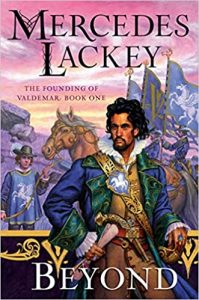 Escape Rating A: Valdemar has always been a bit of an anomaly as far as fantasy worlds go. Most epic fantasies are set at times and in places that are in so much turmoil that that are just no nice places to visit and you really wouldn’t want to live there. There are a few exceptions, like Pern, Celta and Harmony, but for the most part, by the time that an epic fantasy series gets written about a place – or epic space opera or a combination thereof – the situation has gotten so FUBAR that liveability is a long way off even by the series’ end.
Escape Rating A: Valdemar has always been a bit of an anomaly as far as fantasy worlds go. Most epic fantasies are set at times and in places that are in so much turmoil that that are just no nice places to visit and you really wouldn’t want to live there. There are a few exceptions, like Pern, Celta and Harmony, but for the most part, by the time that an epic fantasy series gets written about a place – or epic space opera or a combination thereof – the situation has gotten so FUBAR that liveability is a long way off even by the series’ end.
Which, in a way, means that the Valdemar series, at least the books that are set after the Founding of Valdemar, were cozy fantasy before it was cool. All the problems are human-scale even when they’re not precisely human-shaped, and those problems are not entrenched because the Companions keep them from reaching that point at least within Valdemar’s borders.
The Founding of Valdemar series has been the story of how Valdemar got to be that liveable place we’ve come to know and love, and it’s a humdinger of a start.
Things are never easy. At this point in the Kingdom’s history, they’re barely ten years into what will be a long and storied future. But the situation is neither long nor storied yet. They’re still at the point where the traditions that will sustain them haven’t been created, let alone settled, and Valdemar, both the person and the kingdom, are still figuring out how things are going to go.
Which means that a chunk of the story is involved with literally how the sausage of government gets made, as they have very little to go by. So the rules are being created as a combination of what the Duchy of Valdemar used to do that was good, not doing the things that the Eastern Empire did that were bad, and altering those ideas to fit their new circumstances.
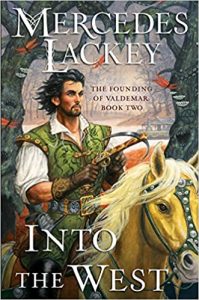 It is generally a two-steps forward, one-step back proposition. We know that sausage is going to be fairly tasty by the time it reaches Queen Selenay in Arrows of the Queen, but making it is hard and frustrating work.
It is generally a two-steps forward, one-step back proposition. We know that sausage is going to be fairly tasty by the time it reaches Queen Selenay in Arrows of the Queen, but making it is hard and frustrating work.
Work that’s hindered by nobles who think that normal means they can go back to some of their more self-indulgent ways, while it’s helped by those who have grown up in the new ways of doing things, like Crown Prince Restil has, and who are now adults and can pick up some of the reins of their own power.
And of course there’s an external threat on the horizon, and much of the action of this entry in the series shows how all those plans and new procedures both help and hinder the preparations for what they hope will be a small-scale war. Emphasis on small with fears focused on war.
To make a long but still beloved story short, Valdemar is a lot of fun to read, especially if you enjoy books where intelligent and competent people do their level best to make good things happen. If you liked L.E. Modesitt’s Imager Portfolio, The Founding of Valdemar trilogy has the same feel to it as that series did after Scholar.
If you read Valdemar back in the day but not recently, Beyond is a great place to get back into the series as it is so “foundational” to what happened later that you don’t need to remember what happened later to get back in there. I would not recommend starting here with Valdemar, as this is very definitely an ending of a chapter, even if it is a beginning for everything we already know.
One final note, and it’s a bit of a trigger warning. As part of the monumental events that bring the Companions to Valdemar, the mages’ beloved, and surprisingly long-lived cat, Sydney-You-Asshole – and yes, that moniker is the cat’s name and he’s EARNED it over the course of this series – choses to go off into the woods on his last journey in the moment the Companions arrive.
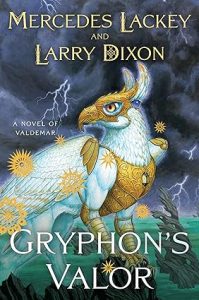 The tributes to Sydney-You-Asshole’s death were many and heartfelt, particularly deeply touching to the heart of any reader who has a beloved companion animal that is gone. There is still dust in this review as I write about it – so be prepared.
The tributes to Sydney-You-Asshole’s death were many and heartfelt, particularly deeply touching to the heart of any reader who has a beloved companion animal that is gone. There is still dust in this review as I write about it – so be prepared.
However, considering that the method of Sydney’s passing was to leave his friends and family as the gate to the Powers was open, I have to wonder if he didn’t turn out to be the archetype for the Firecats of Vkandis. Not that Sydney was a flame point – he was, in fact, a void – but learning at some later point that his attitude was passed down in some fashion to the firecats would not be a surprise. At all. Sydney-You-Asshole certainly had all the cattitude required to become the progenitor of a god’s avatar – but then again, most cats do.
Returning to Valdemar through this Founding series has been a joy and a delight, and has provided the opportunity to slip back into a series that I’ve always loved. Which means I have yet more trips to Valdemar to look forward to, starting with Gryphon’s Valor, the forthcoming follow up to this year’s marvelous Gryphon in Light.

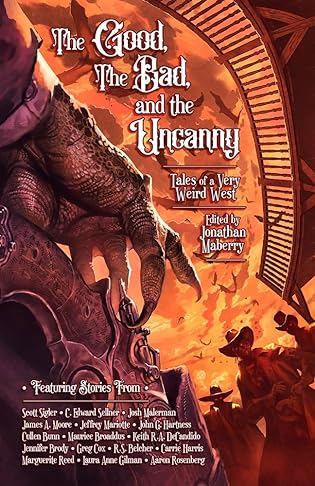 The Good, The Bad, & The Uncanny: Tales of a Very Weird West by
The Good, The Bad, & The Uncanny: Tales of a Very Weird West by 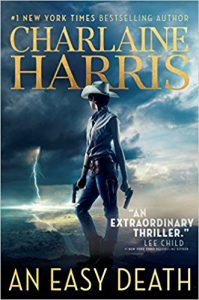 So, if you have that same fondness for Westerns – especially those that touched on, or were touched by, or dipped their whole entire six-shooters into the very, very weird, or if you’re a fan of more recently published ‘Weird West’ inspired stories such as Charlaine Harris’
So, if you have that same fondness for Westerns – especially those that touched on, or were touched by, or dipped their whole entire six-shooters into the very, very weird, or if you’re a fan of more recently published ‘Weird West’ inspired stories such as Charlaine Harris’ 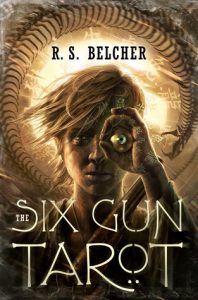 “Devil’s Snare” (Golgotha #1.5) by R.S. Belcher
“Devil’s Snare” (Golgotha #1.5) by R.S. Belcher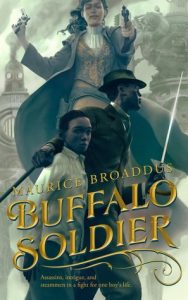 “Desert Justice” by Maurice Broaddus
“Desert Justice” by Maurice Broaddus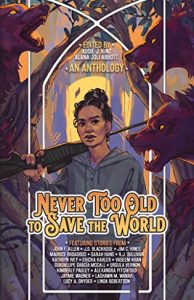 Escape Rating B: I had to do math to get to an overall rating, just as I did for the review of a previous collection by this publisher,
Escape Rating B: I had to do math to get to an overall rating, just as I did for the review of a previous collection by this publisher, 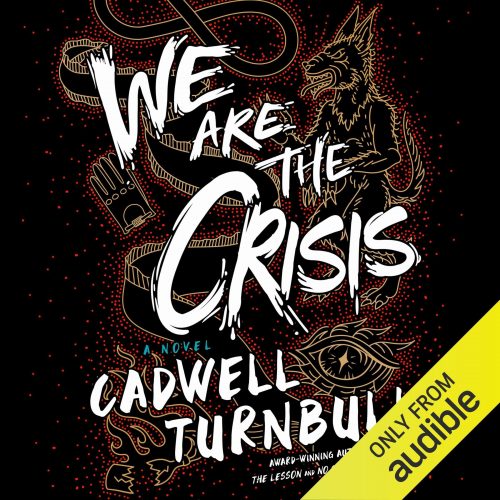 We Are the Crisis (Convergence Saga #2) by
We Are the Crisis (Convergence Saga #2) by 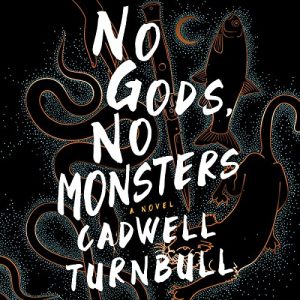 Escape Rating B+: The story so far, with the separation of its many and various threads and its detachment from its characters, reads like a kind of fever dream. Or at least it feels that way when read by its marvelous narrator Dion Graham.
Escape Rating B+: The story so far, with the separation of its many and various threads and its detachment from its characters, reads like a kind of fever dream. Or at least it feels that way when read by its marvelous narrator Dion Graham.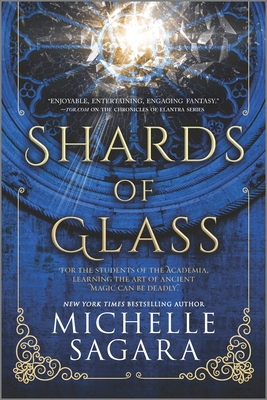 Shards of Glass by
Shards of Glass by 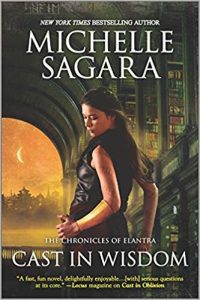 Shards of Glass is a bit of a side story in the marvelously interwoven, intricately-plotted, and long-running
Shards of Glass is a bit of a side story in the marvelously interwoven, intricately-plotted, and long-running 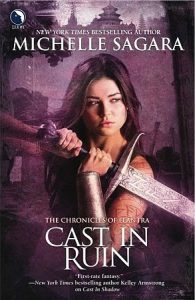 Escape Rating A+: I began reading the
Escape Rating A+: I began reading the 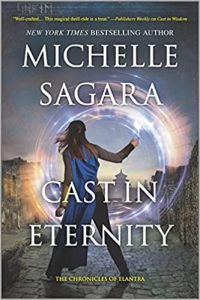 And of course they all turn out to be wrong – and wrong in a way that is buried in the legends of the deep past and will cause catastrophic destruction if they’re not sussed out in time and by the right people.
And of course they all turn out to be wrong – and wrong in a way that is buried in the legends of the deep past and will cause catastrophic destruction if they’re not sussed out in time and by the right people.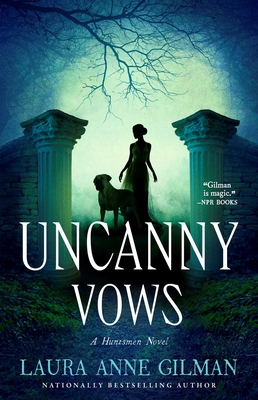 Uncanny Vows (Huntsmen, #2) by
Uncanny Vows (Huntsmen, #2) by 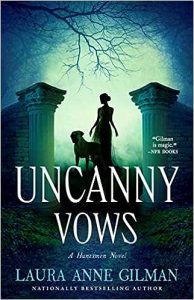 If the idea that the Harker family is somehow involved with the things that go bump in the night feels familiar but you can’t quite remember why, it’s because it IS familiar. Jonathan Harker got himself mixed up with a famous vampire in a little place called Transylvania a mere couple of decades before we first met Aaron and Rosemary Harker in the first book in the
If the idea that the Harker family is somehow involved with the things that go bump in the night feels familiar but you can’t quite remember why, it’s because it IS familiar. Jonathan Harker got himself mixed up with a famous vampire in a little place called Transylvania a mere couple of decades before we first met Aaron and Rosemary Harker in the first book in the 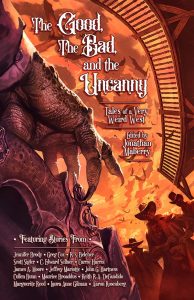 Escape Rating B+: So far, at least, the
Escape Rating B+: So far, at least, the  At the same time, the heavy lifting of setting up the world and the series has already been done in that first book, so this one is able to sink its teeth into the case from the very first page – and that they drive off in Aaron’s rented ‘automotive” gets things going that much faster, while Rosemary’s dislike of the speed, the dust, and Aaron’s relative inexperience driving the thing adds a bit of lightness to what is otherwise a rather dark story of obsession and possession.
At the same time, the heavy lifting of setting up the world and the series has already been done in that first book, so this one is able to sink its teeth into the case from the very first page – and that they drive off in Aaron’s rented ‘automotive” gets things going that much faster, while Rosemary’s dislike of the speed, the dust, and Aaron’s relative inexperience driving the thing adds a bit of lightness to what is otherwise a rather dark story of obsession and possession.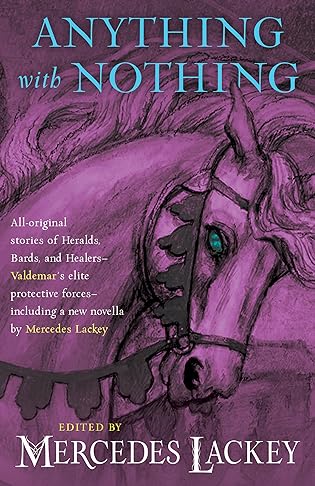 Anything With Nothing (Tales of Valdemar #17) by
Anything With Nothing (Tales of Valdemar #17) by 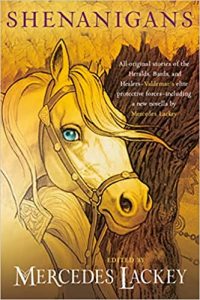 Escape Rating A-: The previous
Escape Rating A-: The previous  Many of the stories in this collection take place either as magic was fading or after it was already gone. In other words, in the run up to the
Many of the stories in this collection take place either as magic was fading or after it was already gone. In other words, in the run up to the 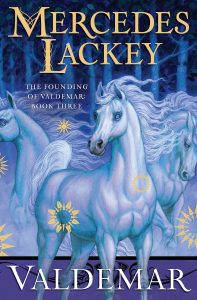 Last but not least, there are several marvelous stories in this collection that would have been equally at home in
Last but not least, there are several marvelous stories in this collection that would have been equally at home in 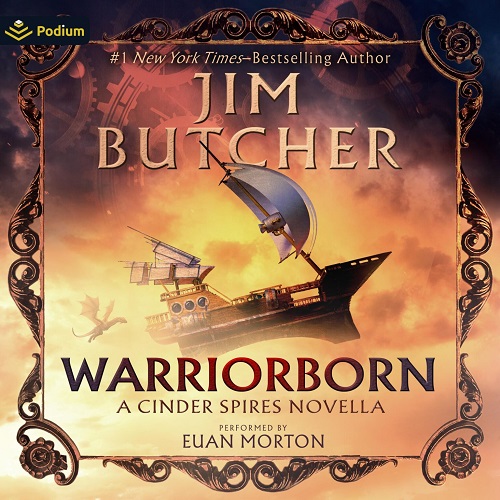 Warriorborn: A Cinder Spires Novella (The Cinder Spires) by
Warriorborn: A Cinder Spires Novella (The Cinder Spires) by 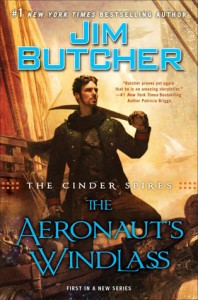 Warriorborn is the perfect method for readers who remember the first book in the
Warriorborn is the perfect method for readers who remember the first book in the 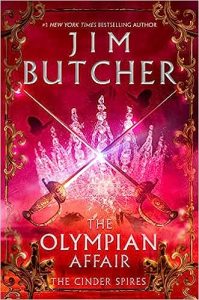 Escape Rating A-: I picked this up this week because I was having a “flail and bail” kind of day. Post Halloween, I was horror’ed out. Even at the horror-adjacency level I’m more comfortable in. I hit the “I can’t evens” and went looking for something a bit more comforting. This would not, I admit, normally have filled that bill, but the NetGalley app was having a flail of its own which is now fixed, but at the time was knocking me out of the book I’m listening to.
Escape Rating A-: I picked this up this week because I was having a “flail and bail” kind of day. Post Halloween, I was horror’ed out. Even at the horror-adjacency level I’m more comfortable in. I hit the “I can’t evens” and went looking for something a bit more comforting. This would not, I admit, normally have filled that bill, but the NetGalley app was having a flail of its own which is now fixed, but at the time was knocking me out of the book I’m listening to.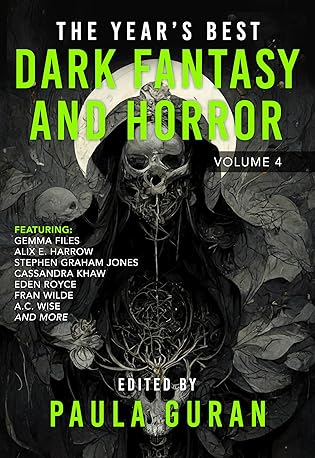 The Year's Best Dark Fantasy & Horror: Volume Four by
The Year's Best Dark Fantasy & Horror: Volume Four by 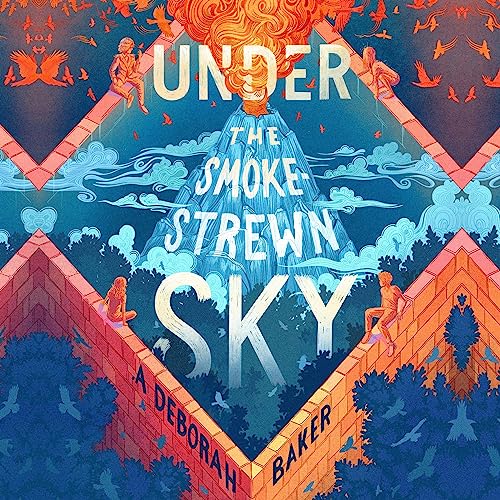 Under the Smokestrewn Sky (The Up-and-Under, #4) by
Under the Smokestrewn Sky (The Up-and-Under, #4) by 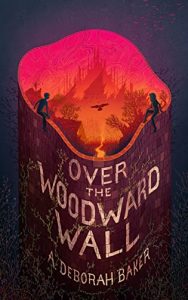 We have come, at last, to the final chapter of Zib and Avery’s journey into and hopefully through the Up-and-Under. It’s a journey that has taken them from their ordinary and mundane homes – even if Zib’s and Avery’s definitions of ordinary and mundane are entirely opposite to one another – and sent them along the Improbable Road on an equally improbable journey through every single one of the elemental kingdoms in the Up-and-Under.
We have come, at last, to the final chapter of Zib and Avery’s journey into and hopefully through the Up-and-Under. It’s a journey that has taken them from their ordinary and mundane homes – even if Zib’s and Avery’s definitions of ordinary and mundane are entirely opposite to one another – and sent them along the Improbable Road on an equally improbable journey through every single one of the elemental kingdoms in the Up-and-Under.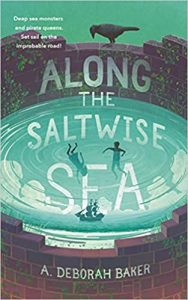 It’s Avery’s bit of stubborn backsliding that pushes the story off the Improbable Road and into their very last set of adventures in the Up-and-Under. Adventures that will have a much bigger impact than any of them imagined when they began.
It’s Avery’s bit of stubborn backsliding that pushes the story off the Improbable Road and into their very last set of adventures in the Up-and-Under. Adventures that will have a much bigger impact than any of them imagined when they began.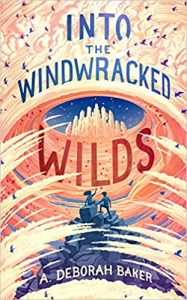 No matter the age of the protagonists, this has been the story of an epic fantasy quest that combines bits of Narnia with elements of Wonderland. Zib and Avery have been brought to the Up-and-Under to fix what’s gone wrong there, while for Zib and Avery the quest is to find their way home. It’s not going to end in a big battle between good and evil, because those concepts aren’t exactly the same in the Up-an-Under as they are back home. Instead, it’s a quest to put the out-of-balance back into balance – even if some of what they see looks like evil to Zib and Avery’s – especially Avery’s – eyes.
No matter the age of the protagonists, this has been the story of an epic fantasy quest that combines bits of Narnia with elements of Wonderland. Zib and Avery have been brought to the Up-and-Under to fix what’s gone wrong there, while for Zib and Avery the quest is to find their way home. It’s not going to end in a big battle between good and evil, because those concepts aren’t exactly the same in the Up-an-Under as they are back home. Instead, it’s a quest to put the out-of-balance back into balance – even if some of what they see looks like evil to Zib and Avery’s – especially Avery’s – eyes.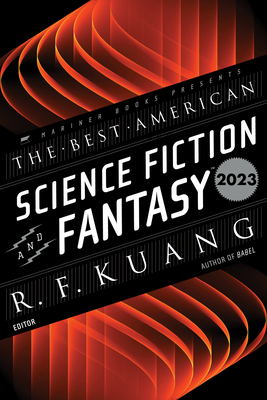 The Best American Science Fiction and Fantasy 2023 by
The Best American Science Fiction and Fantasy 2023 by